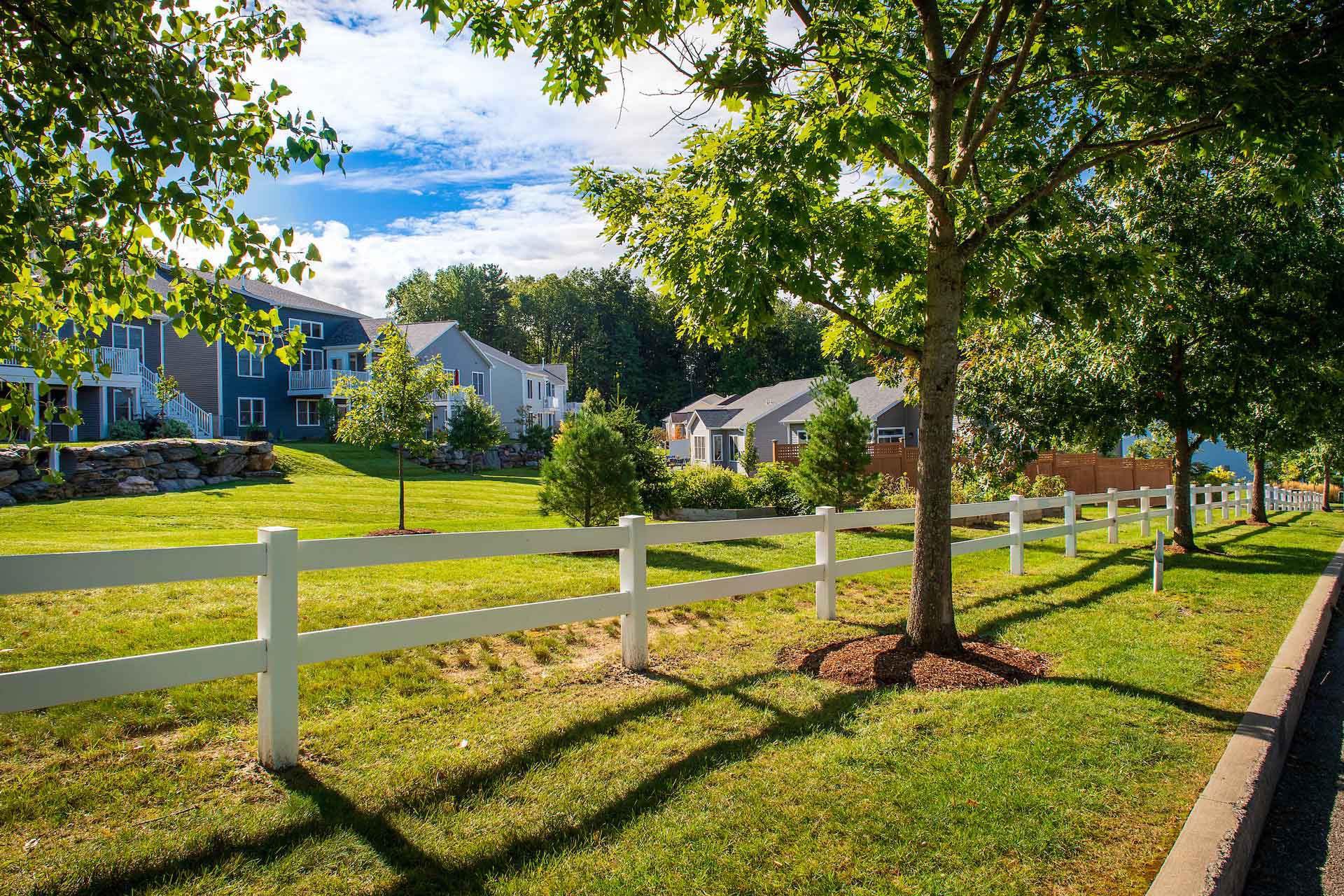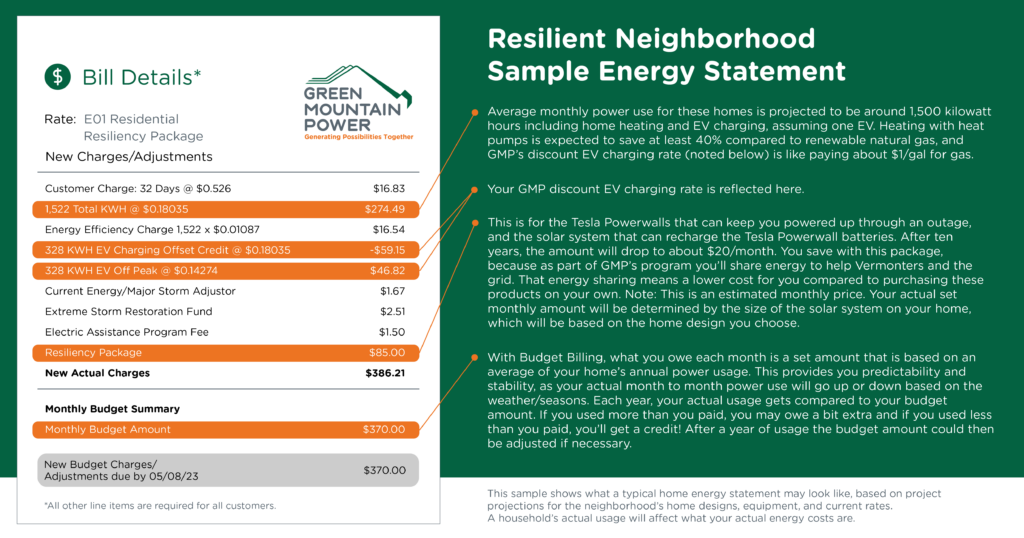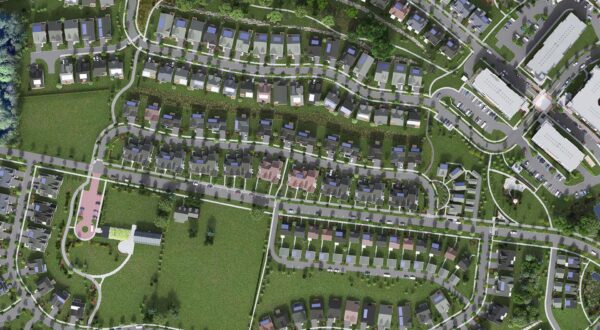
Frequently Asked Questions
What does it mean to be Carbon Free and Fossil Fuel Free?
Hillside East is designed with no fossil fuel infrastructure. There are no gas lines or above ground fuel tanks. The entire neighborhood is designed to operate annually, all aspects of a modern home, without fossil fuels. All homes are 100% electric, featuring electricity from on-site solar generation, on-site battery backup and storage, and from Green Mountain Power’s 100% carbon free electric supply. What this means is that the daily and annual operation of your new home will not add carbon emissions to our atmosphere or life.
How do heat pumps work?
Think of heat pumps like an air conditioner running in reverse. They simply move heat from one place to another. A heat pump can extract heat out of very cold air, and then move it into the home through various methods. This can be through a centrally ducted system or using individual heat pumps known as “mini-splits”, in each room. Hillside east uses a combination of both heat pump and ducted systems designed by industry professionals to ensure that your home heating system will function as expected and in line with conventional gas furnaces.
How efficient are heat pumps in cold climates like Vermont?
Heat pumps work well in cold climates like ours and can keep your home comfortably warm when it’s well below zero – as well as pleasantly cool and humidity-free when the summer heat hits. They use energy super efficiently – rather than burning fuel to create heat, they can extract existing heat from the air and maximize it to keep your space comfortable. Under typical conditions, heat pumps can be over 300% efficient. As a measure of additional support for your heat pump, we will be installing a resistance booster unit in the centrally ducted heat pumps which can provide heating support if needed on the coldest days. In areas with mini-splits or ductless heat pumps, small resistance electric heaters will be used as back-up heat sources. While older heat pumps were not rated for below-zero temperatures, today’s equipment is warranted to -10 actual air temperature. Even below this temperature the heat pumps will function, but back-up heat sources are provided to ensure your home stays at temperature in even the coldest weather.
How many zones for the ducted heat pump system?
The specifics of your home heating design have been created with the support of many experts in our local community and are tailored to the needs of each floor plan. During your design process the specifics of your heating system can be reviewed in detail and will explain how to balance your heating systems and ensure your heat is directed to meet your needs.
How often do heat pumps need to be cleaned/maintained?
The condenser (outside unit) should be professionally cleaned once a year, and the filter in the head (inside unit) should be cleaned every few months. The inside filters are easy to check for dust and clean (sort of like a vacuum filter!). Interior mini-splits should also be professionally cleaned from time to time, and we would recommend discussing this with your heating and cooling contractor when they are on site to service the condenser annually.
Is there a backup heat source?
The centrally ducted heat pump includes a backup resistance heating booster if necessary. The heating system will also be backed up with the battery storage system. In some instances, backup radiant electric heating is also provided. The specifics of your backup heating system are best discussed in the context of your particular plan, as each home is different. See also, “How efficient are heat pumps in cold climates,” for more information.
How do heat pump hot water heaters work?
These work the same way that your heat pump system works. They extract warmth in the air to get water to your ideal temperature. An added benefit of the technology is that they dehumidify the space they are in, helping to keep basements dry. These heat pump water heaters are much more energy efficient than standard electric water heaters, reducing hot water costs for homeowners.
Can I install a pellet stove, woodstove, or wood burning fireplace (either as an option during build or post closing)?
If a fireplace is standard to your home plan, an electric fireplace is provided. Wood Burning Fireplaces and Pellet Stove inserts are also available for purchase, and have the added benefit of providing back-up heat generation. Please note that wood burning and pellet fireplaces require different venting than electric fireplaces, and so not all locations where electric fireplaces are planned, are suitable for these alternatives. Your sales consultant will be able to walk you through what is available for your particular plan.
Can I get a gas cooking stove and install a propane tank myself?
There are many benefits to cooking without gas, both environmental and from a health and safety standpoint, and that is what we are providing. Our Design Coordinator can provide you with an extensive offering of electric and induction ranges. Hillside East includes no fossil fuel infrastructure, and we are proud to be part of the move toward energy resilience.
What are the advantages of heating and cooling with electricity over fossil fuel?
Heating with fossil fuels and transportation are the top sources of carbon pollution in Vermont, and switching to clean electricity for those are the biggest things you can do to reduce your own carbon footprint and to help Vermont reach its climate goals. GMP’s energy supply is 100% carbon free and 78% renewable on an annual basis, and GMP will be 100% renewable by 2030. This means that your new home heating system will not add CO2 to our atmosphere, and that is the driving force behind the Hillside East neighborhood and its fossil fuel free infrastructure.
What’s an average expected power bill in summer? In winter?
Your home will run on efficient technology powered by clean electricity. You won’t be buying fossil fuel to heat your home, your water, or to run your stove. So, while you will be using more electric power than you may have in the past, you will not be using fossil fuel or have to worry about unpredictable fuel costs.

How does the powerwall program work?
Powerwalls offer seamless home battery backup during any severe weather or outage. It is a fixed monthly resiliency package for storage paired with solar for extended backup power. This is a significant savings compared with the typical retail price of the systems. You receive this discount because you’ll be sharing energy with GMP during peak energy times (like heat waves) which helps to reduce costs (and carbon emissions) for all GMP customers. We use the clean stored energy instead of having to purchase costly, often dirtier, power during peak times and all GMP customers share the savings. If severe weather is in the forecast, we work to make sure you have the backup energy you need, in the event of an outage.
How long will the heat and electricity work if the home is running on battery backup?
Thanks to the backup power in your home battery system, during an outage your home heating system can be backed up for 24 hours on average, potentially longer if paired with solar.
How long is the home battery’s life?
The warranty is for ten years, and they’re expected to last longer than that. The Powerwalls can be recycled once you’re done using them.
How much does it cost to install an EV charger in my garage?
You won’t need to worry about that! Every home already comes with an EV charger ready for you for whether you have an EV, have a friend with an EV visiting, or plan to get one down the road.
How does the solar program at Hillside East provide benefits to our homeowners?
Every home at Hillside East comes standard with a rooftop solar array as well as in-unit Powerwall battery storage. The benefits to the homeowner in addition to generating clean, green energy at a fraction of the cost of net metering, is that in the instance of a power outage to the grid, the solar panels will continue to generate power. By doing so the homeowner will continue to stay powered up by deploying the energy stored in the Powerwalls, and then repowering the batteries through the rooftop solar arrays. At Hillside East we believe that doing the right thing for our environment and doing the right thing for our homeowners are not mutually exclusive.
What about solar? Will there be solar on my roof? If so, how does it work?
Your home is part of a community that is resilient and powered with clean energy from our local utility GMP. We are currently working with GMP on a resiliency program that will provide solar on every home. This is an added benefit to you, as it means when paired with your Powerwall batteries – you are getting an added layer of resiliency – with the solar on your roof powering your battery during outages so you stay powered up.
What will it cost?
This goal of the program that is being finalized is to provide a cost-effective way to have solar with storage for resiliency. You will have a modest monthly payment for the benefit of this clean energy on your home. We will provide you with all the details before you sign your purchase agreement.
What’s my credit going to be if there’s solar on my roof?
You’re generating solar energy that will help power your home through outages by recharging your Powerwall batteries. This is a tremendously cost-effective way for you to have the comfort, safety, and convenience of staying powered up with clean energy.
I want to do my own solar, can I?
Hillside residents may not own their own solar panels; however, all of our new homes feature a resiliency package partnership with Green Mountain Power that includes solar panels. This allows the many benefits of solar power and net metering without the hassle and cost of solar panel ownership.
Can I install solar on my own post-closing?
The resiliency package which includes solar plus storage will be a standard offer included in all homes so installing after will not be necessary.
What happens if I have a roof leak from a solar panel?
Installation is warrantied through our trusted solar installation partners and if anything occurs, it will be repaired. Homeowners can contact GMP or our solar installation partners directly if needed.
What happens if I have to replace roof shingles and the solar panels are in the way?
It is likely that reroofing will coincide with any solar panel replacements. If so, there will be a fee to remove the panels and reinstall when it comes time to re-roof. This cost will be paid by the homeowner for any single family home, and will be budgeted in reserves for any townhomes, where roofing and siding are managed by the Homeowners Association. Homeowners can contact GMP or our solar installation partner if repairs are needed.
